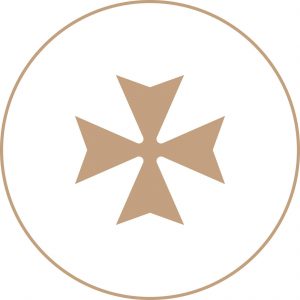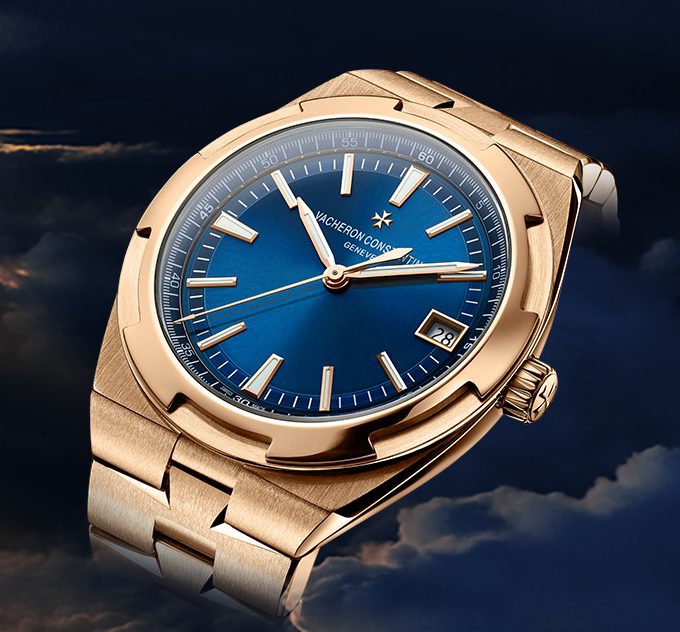Contents
Summary
Founded in 1755, Vacheron Constantin is the world’s oldest watch Manufacture in continuous production, faithfully perpetuating a proud heritage of watchmaking excellence and stylistic sophistication through generations of master artisans. The luxury brand survived the French Revolution, and both world wars, making it the longest standing watchmaker worldwide. Its most exquisite watches are handcrafted with gold, diamonds and platinum, making them not just timepieces, but wearable art. Vacheron Constantin brings to life unparalleled heritage and a spirit of innovation through its key collections: Patrimony, Traditionnelle, Métiers d’Art, Overseas, Fiftysix® and Historiques. It also offers its discerning clientele of connoisseurs the rare opportunity to acquire unique and bespoke timepieces by means of its Les Cabinotiers department.
History
Vacheron Constantin was founded in 1755 by watchmaker Jean-Marc Vacheron in Geneva, Switzerland. In 1770, he created the world’s first horological complication, and nine years later, designed the first engine-turned dials. His son Abraham took over the family business in 1785 and kept the business afloat despite the French Revolution and the occupation of Geneva by the troops of the French Directory. Following the lead of his father, he taught the trade to his son, Jacques, who later helmed the company and initiated exports to France and Italy. During this time, the company also manufactured more complicated timepieces, such as musical watches.
In 1819 Vacheron collaborated with François Constantin and renamed the company Vacheron et Constantin. François had a keen eye for business, establishing new markets during three decades of travel. In 1833 they hired Georges-Auguste Leschot, who was the first person to standardise watch movements into calibers. In 1844 Arts Society awarded Rive Prize’s gold medal to Vacheron and Constantin and G.-A. Leschot for ‘the discovery of the most value to the Genevese industry.’ Following François Constantin’s death in 1854 and Jacques-Barthélemy Vacheron’s death in 1863, the company was helmed by their heirs.
In 1869 Vacheron Constantin entered its watches in chronometry competitions at Geneva Observatory, winning distinctions. In 1877, the company was renamed Vacheron and Constantin, Fabricants, Geneve. Three years later, it began using the Maltese cross as its symbol. In 1887 Vacheron and Constantin was reorganised into a joint-stock company. For its achievements, Vacheron and Constantin was awarded a gold medal at Swiss National Exhibition in Geneva in 1887. And at Milan International Exhibition in 1906, Vacheron and Constantin presented such beautiful watches that the jury awarded the company its Grand Prix.
Vacheron Constantin began getting orders from Queen Mary of Romania, Henry and William James and Prince Napoleon, grandson of Jerome Bonaparte. To display its luxury watches, Vacheron Constantin inaugurated its boutique on August 1, 1906. The following year, the maison presented its first Royal Chronometer; its legendary durability, reliability and accuracy were appreciated particularly in harsh climates. During 1914-15, the maison created a small oblong movement, le tuyau. This caliber was used in a curved version for a stunning wristwatch handcrafted with gold, platinum and diamonds. It was commissioned by Sir Bhupinder Singh, Maharaja of Patiala.
In 1929 the Swiss residents of Egypt presented a timepiece to King Fuad I that combined a chronograph, perpetual calendar, minute-repeater and grand small-strike clock-watch. Enamelled royal arms decorated the caseback of the yellow-gold pocket-watch with a silvered dial, Arabic numerals, an aperture for the days and dates, a sub-dial for the months and years, a thirty-minute counter and the ages and phases of the moon. During the Great Depression, Vacheron and Constantin found itself in hot waters.
In 1940 Georges Ketterer acquired majority stake of Vacheron and Constantin from Charles Constantin. In 1946, the brand created one of its most complicated watches with fourteen complications. for King Farouk, son of King Fuad I of Egypt. Sadly George Ketterer passed away in 1969 and his son Jacques succeeded as the head of Vacheron and Constantin. In 1970, the company was renamed Vacheron Constantin.
In June 1972 the French government awarded Vacheron Constantin Diplôme du Prestige de la France. When Jacques Ketterer passed away in 1987, Vacheron Constantin changed hands. Sheik Ahmed Zaki Yamani, former Oil Minister of Saudi Arabia, became the company’s majority shareholder and folded Vacheron Constantin into his personal portfolio of holdings. The illustrious Richemont Group acquired Vacheron Constantin in 1996 and continues to lead the company today.
In 2001 Vacheron Constantin won the Aiguille d’Or -the first Grand Prix d’Horlogerie de Genève- with Lady Kalla jewellery timepiece and in 2005, with its tour de l’Île timepiece. That year, Juan Carlos Torres was named CEO. On its 250th anniversary in 2015, the maison produced its most remarkable watch with fifty-seven complications. and was awarded Grand Prix de l’Horlogerie de Genève Jury’s Prize. Since, Vacheron Constantin continues to break records. In 2019, it introduced a tourbillon and ultra-thin perpetual calendar. The following year, it released Traditionnelle Twin Beat Perpetual calendar, which features an impressive two month power reserve!!
In recent news Vacheron Constantin has begun using blockchain technology to authenticate timepieces in its Les Collectionneurs collection of vintage watches. Today the company is an active member of Federation of the Swiss Watch Industry and produces about 20,000 timepieces each year. Vintage or modern, Vacheron Constantin is considered an excellent investment in terms of complications, design, craftsmanship and heritage.
Vision
The Maison envisions creating timepieces with unique technical and aesthetic signatures as well as an extremely high level of finishing touches. Vacheron Constantin brings to life unparalleled heritage and a spirit of innovation through its collections. It also offers its discerning clientele of connoisseurs the rare opportunity to acquire unique and bespoke timepieces by means of its Les Cabinotiers department.
“Do better if possible and that is always possible.” Vacheron Constantin did not choose this motto by chance. Over the centuries, through skilfully interweaving tradition and innovation, it has acquired and nurtured the technical, aesthetic, artistic and human means required to express its vision of time.
Whether setting off to conquer the skies or following in the footsteps of great travellers, the Maison takes up every challenge involved in telling its miniaturised stories on a dial or at the core of a mechanism. Human beings play the starring role in this epic saga. A love of fine craftsmanship and a deep-felt attachment to shared values motivate the teams and define the everyday life of the Manufacture.
Mission Statement
High standards are our supreme value!
Key Team
Louis Ferla, CEO
Awards and Recognition
There are many awards and accolades but the ones that stand out is a gold medal at the Swiss National Exhibition in Geneva in 1887. After winning the Geneva Watchmaking Grand Prix twice, Vacheron Constantin won the Watch of the Year Prize awarded by the magazine Montres Passion. What’s more, the iconic luxury brand is a recipient of one of the nineteen annual Grand Prix d’Horlogerie de Genève awards in 2019.
Products and Services
Watches
References
- Official website Vacheron Constantin
- Vacheron Constantin ticks over 250 years Swiss Info
- 5 reasons collectors love Vacheron Constantin Christie’s
- Vacheron Constantin Chronoplus
- LinkedIn page of Vacheron Constantin LinkedIn
- Father Time: Swiss Watches Cigar Aficionado
- Vacheron Constantin Harnesses Blockchain To Authenticate Its Vintage Watches Forbes
- FHH Certification Vacheron Constantine
- Facebook page of Vacheron Constantin Facebook
- Vacheron Constantin Headquarters and Manufacturing Center The Plan
- Twitter page of Vacheron Constantin Twitter
- Vacheron Constantin is trying to win millennials by selling $45,000 watches online Business Insider
- Youtube page of Vacheron Constantin Youtube
- Vacheron Constantin Les Historiques 1942 Triple Calendar European Watch Co.
- Instagram page of Vacheron Constantin Instagram
- Vacheron Constantin Patrimony Traditionnelle Manual Wind 18K Rose Gold European Watch Co.
- Wikipedia page of Vacheron Constantin Wikipedia
- World’s oldest watchmaker opens boutique in Beirut Life Executive
- Vacheron Constantin Unveils 13 Watches For 2020 Forbes
- Brand Awareness NY Times





